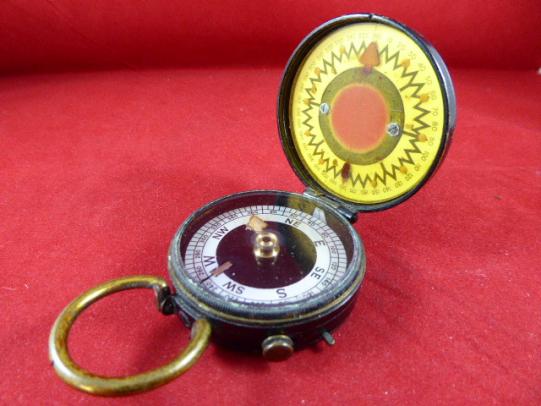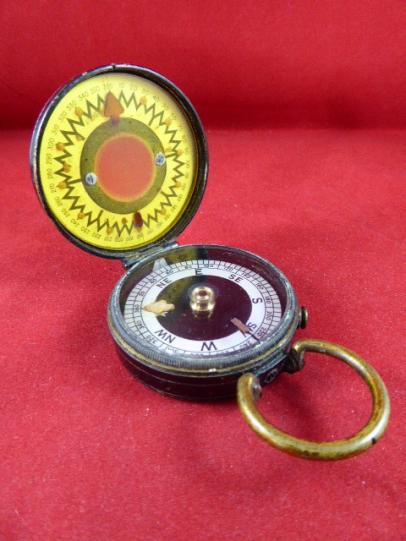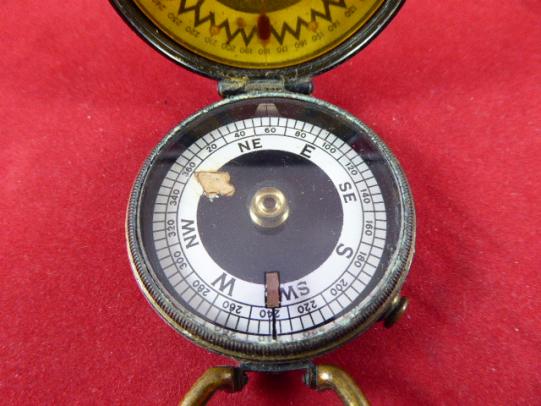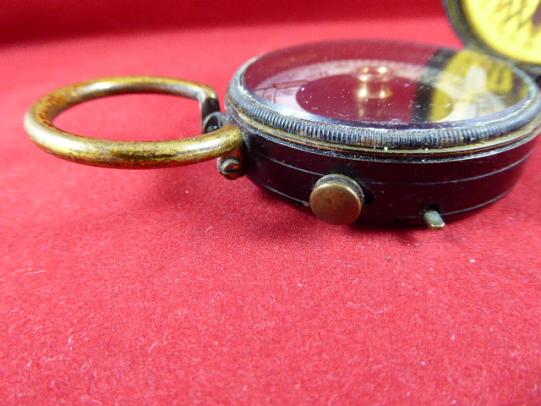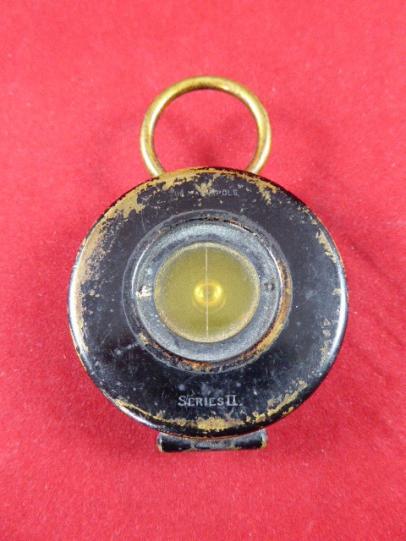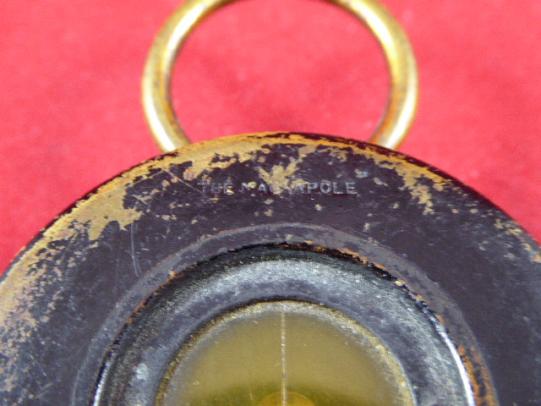Early WWI British Army Officer's Magnapole Series II Compass Thomas Armstrong & Bros
Here on offer is a very early version of the WW1 British Army Officer’s “MAGNAPOLE” Series II Compass, by Short & Mason.
Thomas Watling Short and William James Mason founded ‘Short & Mason Ltd’ in 1875. Their business address was at 40 Hatton Gardens, London. The company created the MAGNAPOLE compass but was also a retailer of precision instruments made by famous manufacturers
This fine example is in full working order with some age and usage related paint loss.
The rotating crystal face and cover glass are undamaged and clear and the inside of the cover has the black star-shaped luminous pattern in the lid
This design was invented by Major Gilbert LEGH (b. April 21, 1858 - d. Dec. 23. 1939) who was a British officer (Grenadier Guards). He designed in 1896 a system making it possible to read bearings in the darkness wih a precision of one degree (patent no. 19,600 - for figs. click HERE - complete copy available). The basic principle consisted in placing a star-shaped metallic stripe with tiny holes upon a luminous paper disc. The black "star" having 36 branches and the V-shaped line between two branch ends comprising 10 holes, each hole represents one degree. The loop of the basic model featured a sighting notch. The compass capsule featured a bezel crystal with a radius painted on it permitting thus to set a bearing. The prismatic version, signed by Lawrence & Mayo., 87 Chancery Lane, London, featured a reticle-shaped sighting vane in the lid.
This design was also used later on the MAGNAPOLE compass in a simplified version, which this compass has installed.
This early version doesn’t have a patent number or makers name on the base, just the words:
PATENT APPLIED FOR
It measures 5.9cm diameter and 7.9cm diameter with the loop ring open.
It weighs 109g.
Please see my pictures for the details of the condition, which complement this description.
Please see my TERMS OF BUSINESS regarding Deliver Charges and Insurance regarding additional insurance cover, should you require it, BEFORE the item is dispatched.
The responsibility lies with the customer to check with your Customs restrictions that this item can be imported into your country.
Code: 50202

